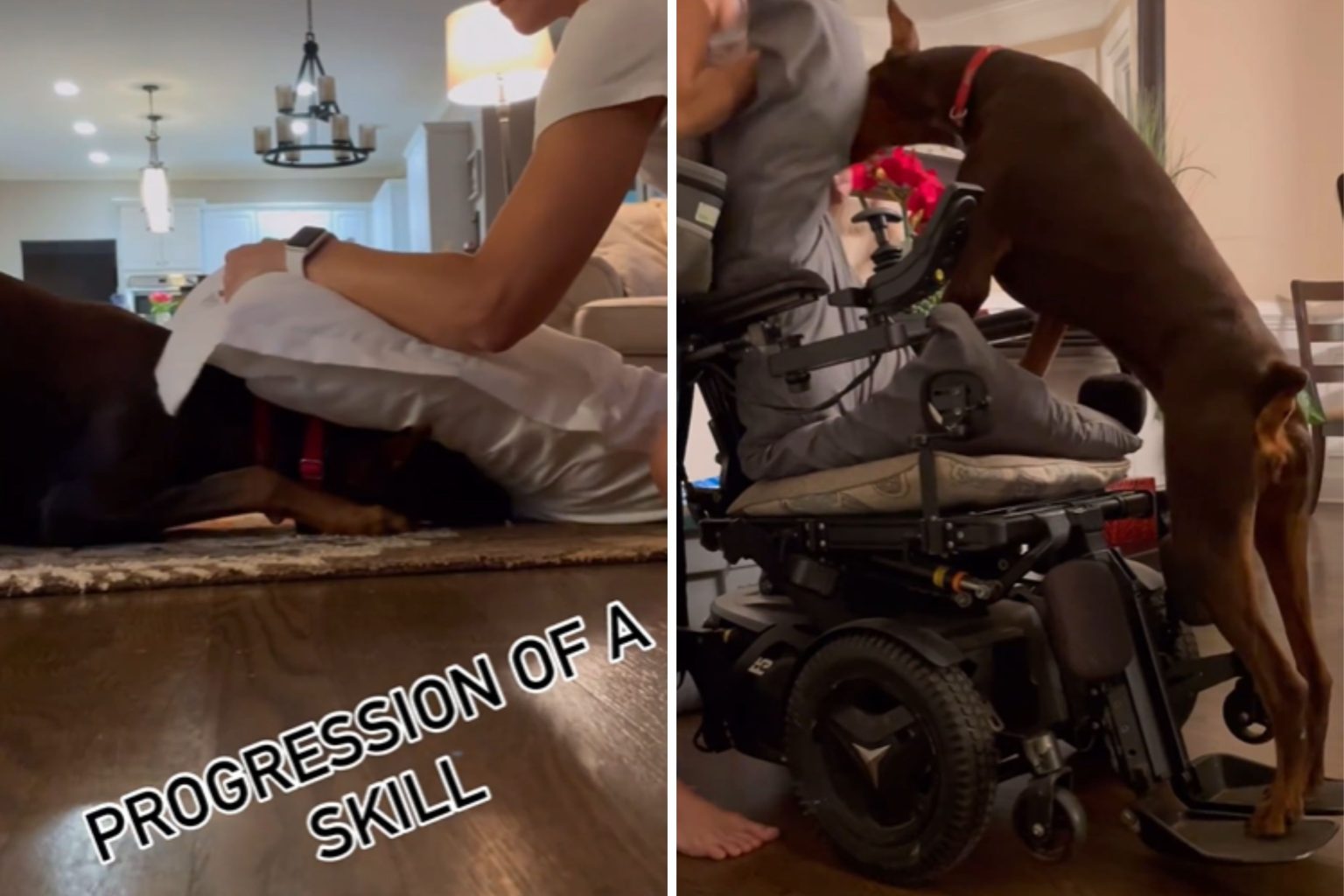Megan Gentry and her husband Tyson decided to train their Doberman pinscher puppy, Bailey, as a service dog to assist Tyson, who is a C-4 quadriplegic. Since Tyson is allergic to Labradors and other retrievers, they were limited in their options for service dog trainers and decided to train Bailey themselves. The training focused on teaching Bailey to push Tyson up if he leaned too far forward in his wheelchair. Gentry used Bailey’s mealtimes as training sessions, with the dog learning to push up against a pillow before progressing to pushing Tyson himself.
The training process was not without challenges, with Gentry almost giving up at one point because she felt Bailey wasn’t strong enough for the task. Trainer Scot Rucker provided guidance and encouragement, emphasizing the importance of consistency in training. Gentry also faced difficulties in teaching Bailey to position her back feet on Tyson’s footrest for leverage. Despite the frustrations of dog training, Gentry persevered, knowing how much Bailey’s assistance would benefit Tyson and provide him with greater independence, such as being able to pick up items he dropped without assistance. Bailey has also learned other commands to help Tyson, including cleaning up, closing doors, hitting handicapped buttons, turning his wheelchair, and going under tables when needed.
The training process for Bailey to become Tyson’s service dog demonstrates the dedication and patience required in dog training. Gentry emphasized the rewarding but also frustrating nature of training a dog, as it takes time and consistency to ensure the desired behaviors are learned. The video shared on Gentry’s Instagram account showcases the progression of Bailey’s training with the “push” command, highlighting the work, persistence, and time involved in training a service dog. Despite the challenges faced during training, Gentry found that having Bailey by Tyson’s side provided relief and increased his independence, allowing him to do tasks that were previously impossible without assistance.
Bailey has not only learned to push Tyson up in his wheelchair but has also mastered other commands that assist Tyson in his daily life. One of Tyson’s favorite commands is “bring,” where Bailey retrieves items he drops and places them on his lap. This command allows Tyson to retrieve items while out shopping and provides him with a sense of independence and autonomy. Bailey’s ability to differentiate between who to bring an item to and her willingness to help even when off duty showcase the bond and connection between the service dog and her owner. Despite the challenges and frustrations of dog training, Gentry and Bailey’s journey demonstrates the immense benefits and rewards of training a dog to assist individuals with disabilities and improve their quality of life.
Overall, the story of Megan Gentry and Bailey’s training journey emphasizes the dedication, patience, and rewards of training a service dog to assist individuals with disabilities. The challenges faced during training, such as overcoming allergies to certain breeds and teaching complex commands, highlight the effort and commitment required in the process. Despite moments of frustration and wanting to give up, Gentry’s perseverance and dedication ultimately paid off, with Bailey providing invaluable assistance to Tyson and enhancing his independence. The video shared on social media captures the progression of Bailey’s training and showcases the hard work, persistence, and time invested in training a service dog. Bailey’s ability to perform tasks such as pushing Tyson up in his wheelchair, retrieving items, and assisting with everyday activities demonstrate the impact a well-trained service dog can have on the life of an individual with a disability.


